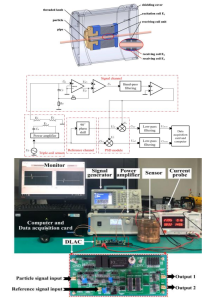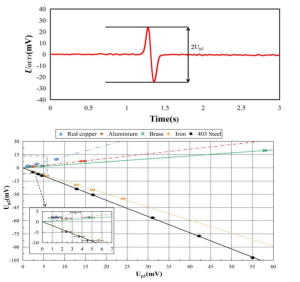Experiment name: Application of power amplifier in metal particle material identification and particle size estimation based on inductive sensors
Research directions: inductive sensors, double lock-in amplifier circuits, metal particle identification
Experimental equipment: The hardware system consists of signal source, SLA-100-810 power amplifier, inductive sensor and double phase-locked circuit.
Experimental purpose: The detection of metal particles in oil is of great significance to fault diagnosis and health prediction of mechanical equipment. By analyzing the size and material of the particles, the source of abnormal wear can be traced.
Experiment content: The signal source provides sufficient excitation current to the transmitting coil through the power amplifier. When a metal particle passes through the sensor’s internal magnetic field, it induces a weak signal due to changes in magnetic permeability. By detecting the amplitude and phase of the signal through a circuit, the particle size and material of the measured particles can be identified.
Experiment procedure:
In order to analyze the sensitivity of this sensing pair in the detection of metal particles, copper, brass, aluminum, iron and 403 steel particles of different sizes were selected as experimental materials. The particle size is expressed by the equivalent sphere diameter. The metal particles flow through the sensor through the channel, and the double lock-in amplifier circuit processes and detects the complex domain signals induced by the five types of particles and plots the peak-to-peak values of the signals in the complex plane.
Test Results:
This article introduces a double lock-in amplifier circuit into a three-coil inductive sensor to extract noisy complex domain signals. The results show that in a sensor tube with an inner diameter of 7 mm, iron metal particles with a minimum diameter of 25 μm and copper metal particles with a minimum diameter of 70 μm can be detected. And it is proved that the signal induced by metal particles in the alternating magnetic field is a complex domain signal. Based on the output of the double lock-in amplifier circuit, the relationship for calculating the modulus and phase of Vχa is derived. To sum up, this circuit has the advantages of high resolution, high sensitivity and high precision; strong anti-interference ability; and low zero drift.





